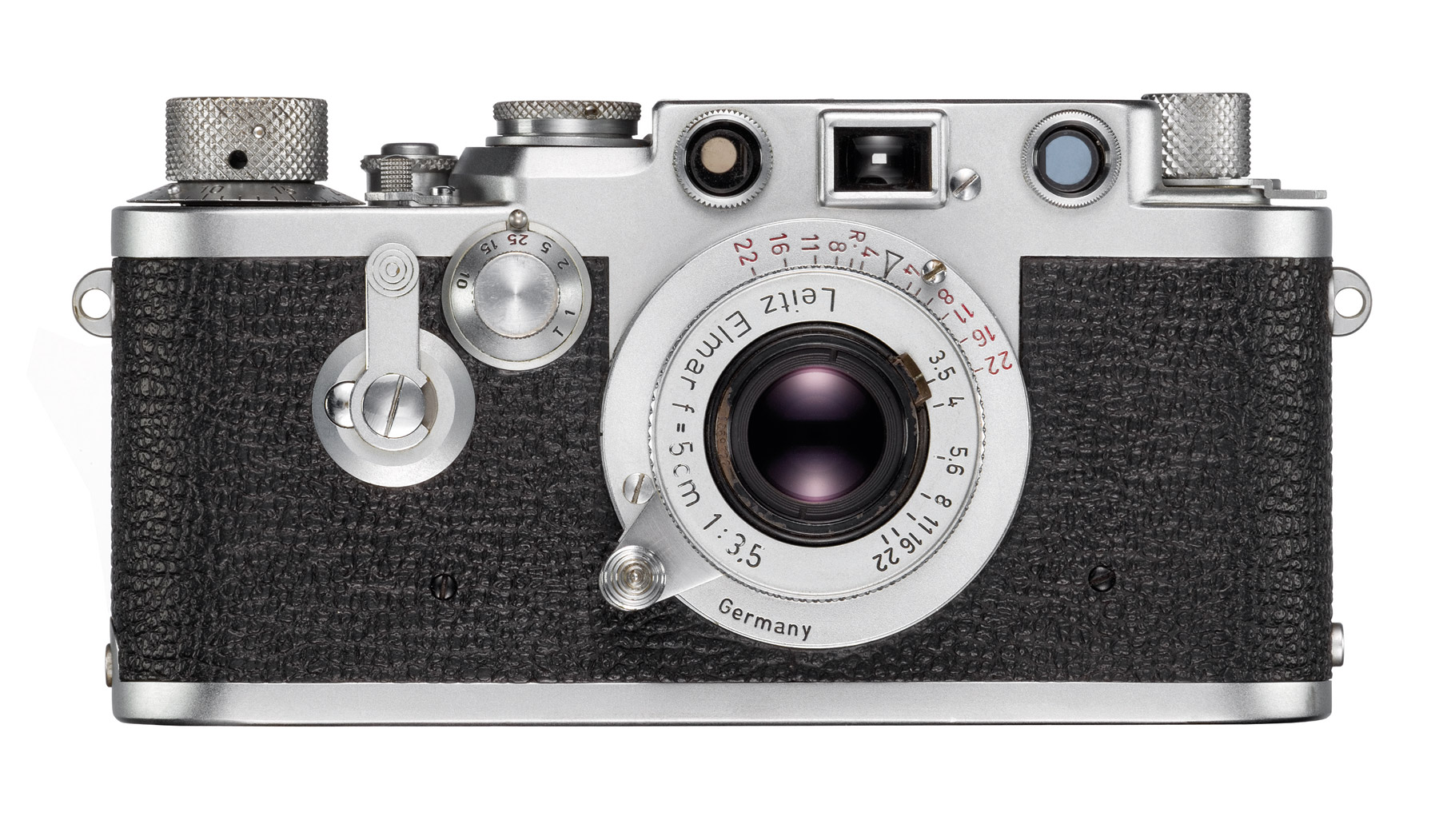The Leica IIIf is a classic 35mm rangefinder camera produced by the renowned German camera manufacturer Leica. It was introduced in the early 1950s and is part of Leica’s long history of producing high-quality and iconic cameras.

Key features of the Leica IIIf include:
- Rangefinder Focusing: The Leica IIIf, like other Leica rangefinder cameras, features a rangefinder focusing system. This allows photographers to accurately focus their shots by aligning two superimposed images in the viewfinder.
- Interchangeable Lenses: The camera is compatible with a range of interchangeable lenses, providing photographers with options for different focal lengths and creative possibilities.
- Mechanical Precision: Leica cameras are known for their exceptional mechanical precision and craftsmanship. The Leica IIIf is no exception, featuring high-quality construction and precision engineering.
- Manual Exposure Control: The camera offers manual control over exposure settings, allowing photographers to set the aperture and shutter speed manually to achieve their desired exposure settings. This manual control is valued by photographers for its creative flexibility.
- Compact and Portable: The Leica IIIf is relatively compact and portable, making it a popular choice for street photography and documentary work where portability and discreetness are important.
- Built-in Light Meter (Optional): Some versions of the Leica IIIf were equipped with a built-in light meter, while others relied on external light meters or the photographer’s experience in judging exposure.
- Iconic Design: The Leica IIIf features a classic and timeless design that has become an iconic symbol in the world of photography. Its simplicity and elegance are part of its enduring appeal.
Which lenses are compatible with the Leica IIIf?
The Leica IIIf is compatible with a wide range of interchangeable lenses that use the Leica M39 screw mount, also known as the Leica Thread Mount (LTM). This means you can use various Leica lenses designed for this specific mount, as well as lenses from other manufacturers that also use the M39 screw mount.
Here are some of the compatible lenses for the Leica IIIf:
- Leica Lenses: Leica produced a variety of high-quality lenses for their screw-mount cameras. Some popular options include the Leica Summicron, Leica Elmar, and Leica Summitar, among others. These lenses are known for their exceptional optical quality and are highly regarded by photographers.
- Voigtländer Lenses: Voigtländer is another well-known German optics manufacturer that produced lenses for the Leica screw-mount cameras. Their lenses are highly regarded for their optical performance and build quality.
- Zeiss Lenses: Carl Zeiss, a renowned German optics company, also manufactured lenses in M39 mount for Leica cameras. Zeiss lenses are known for their sharpness and character.
- Soviet Lenses: During the Soviet era, lenses from manufacturers like Jupiter and Industar were produced for M39 screw-mount cameras. Some of these lenses can be quite affordable and offer unique characteristics.
- Adapted Lenses: With the use of adapters, you can also mount lenses from other systems onto your Leica IIIf. However, this may require additional accessories and might not provide the same level of integration and convenience as native M39 lenses.
When selecting a lens for your Leica IIIf, consider factors such as focal length, maximum aperture, and the specific photographic style or purpose you have in mind. Keep in mind that older lenses may require maintenance or adjustments to ensure they function optimally with your camera. Additionally, make sure the lens you choose is compatible with your camera’s screw mount.
A brief history of the camera series
The Leica IIIf was part of a series of Leica screw-mount cameras and was succeeded by other models in the Leica M-series.
Cameras That Came Before the Leica IIIf:
- Leica I (Model A): The Leica I, introduced in 1925, was the world’s first commercially successful 35mm camera. It marked the beginning of the Leica brand and featured a non-interchangeable lens.
- Leica II: The Leica II, introduced in 1932, was an improved version of the Leica I and featured interchangeable lenses. It incorporated various refinements and enhancements.
- Leica III: The Leica III, introduced in 1933, further improved on the Leica II with the addition of a built-in rangefinder. This model marked the transition from the Barnack-style camera to the Leica screw-mount series.
- Leica IIIa: The Leica IIIa, introduced in 1935, continued the evolution of the Leica III series. It featured improvements in the rangefinder design and other refinements.
Cameras That Came After the Leica IIIf:
- Leica M3: The Leica M3, introduced in 1954, marked the transition from screw-mount Leica cameras to the Leica M-series with a bayonet lens mount. It is one of the most iconic and highly regarded rangefinder cameras in history.
- Leica M4: The Leica M4, introduced in 1967, was an updated version of the Leica M3. It featured a faster rewind lever and improved film loading compared to its predecessor.
- Leica M5: The Leica M5, introduced in 1971, introduced several design changes, including a more modern and larger body with an integrated light meter. It represented a departure from the traditional M-series design and was met with mixed reactions from Leica enthusiasts.
- Leica M6: The Leica M6, introduced in 1984, returned to a more classic M-series design while retaining the integrated light meter. It became a favorite among Leica users for its simplicity and reliability.
- Leica M7: The Leica M7, introduced in 2002, added aperture-priority automatic exposure mode to the M-series lineup. It featured an aperture-priority mode and continued to be compatible with Leica M lenses.
- Leica M (Typ 240): The Leica M (Typ 240), introduced in 2012, marked the transition to digital rangefinder cameras in the M-series. It combined traditional rangefinder focusing with a full-frame digital sensor.
The Leica IIIf holds a special place in the history of photography and remains highly sought after by collectors and photographers who appreciate the craftsmanship and image quality associated with Leica cameras. Despite its age, it continues to be a functional and reliable camera for those who appreciate shooting with vintage equipment.
